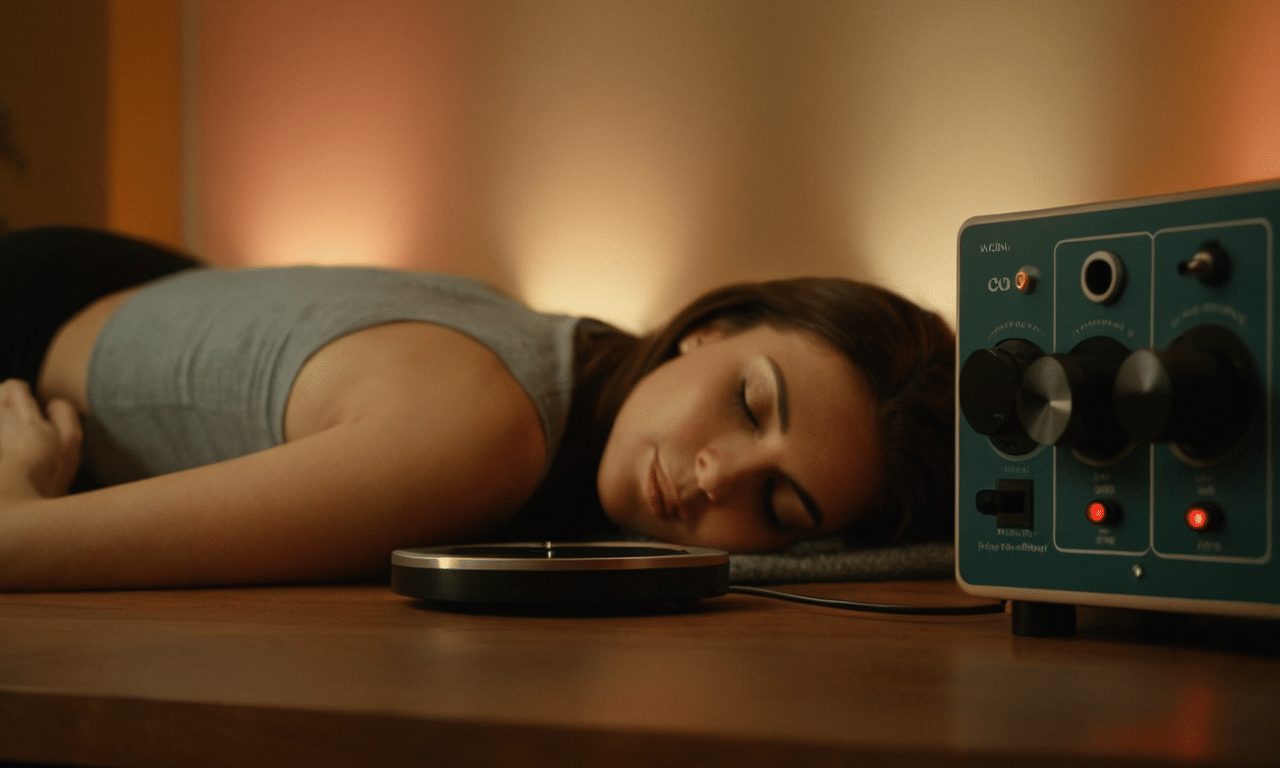In today’s fast-paced world, our senses are constantly bombarded by noise and distractions. Sound therapy has emerged as a powerful tool for calming the mind and soothing the soul. But what exactly is sound therapy, and why is it gaining popularity?
What are some common types of sound therapy?
Sound therapy encompasses various modalities, including music therapy, sound healing, binaural beats, ASMR, white noise, nature sounds, and vibrational sound healing. Other approaches include tuning forks, singing bowls, and sonic meditation. Each modality offers unique benefits and applications for physical, emotional, and mental well-being.
Type of Sound Therapy Modalities
- Sound Healing: Uses specific sounds or rhythms to promote healing.
- Binaural Beats: Plays two slightly different frequencies in each ear for meditation and focus.
- Vibrational Sound Therapy: Moves sound waves directly through the body for physical wellness.
- Music Therapy: Involves listening to or creating music to induce relaxation or stimulate cognitive processes.
- Acoustic Sound Wave Therapy: Uses sound waves to treat musculoskeletal issues and reduce pain.
- Light and Sound Therapy: Combines light and sound frequencies for improved focus and sensory regulation.

Types of Sound Therapy
Sound therapy includes various modalities that utilize sound to improve physical and mental health. One of the most common types is music therapy, which involves listening to or creating music to induce relaxation or stimulate cognitive and emotional processes. When Beethoven composed, he might not have intended his work to become a modern stress-buster, but here we are!
Another popular form is sound healing, which uses specific sounds or rhythms to promote healing in the body. Vibrational sound therapy is a variation designed to move sound waves directly through the body to promote physical wellness. Talk about feeling those good vibes—literally! Plus, there’s something inherently calming about lying on a table bathed in pleasant tones.
Binaural beats involve playing two slightly different frequencies in each ear, which the brain perceives as a single, pulsating beat. This method is particularly effective for meditation and focus. Then there’s acoustic sound wave therapy, which uses sound waves to treat musculoskeletal issues. It’s like giving your muscles a symphony to help them relax. Check out more about these intriguing techniques at our sound therapy guide.
Benefits of Sound Therapy
Sound therapy offers many scientifically-backed benefits, starting with stress relief. Whether it’s through a calming tune or ambient sounds, sound therapy has a way of lowering cortisol levels. It’s like the universe giving you a high-five for taking a deep breath. Improved mood is another benefit, as exposure to certain frequencies can release feel-good hormones like dopamine.
Enhanced cognitive function is another advantage. Studies show that sound frequency therapy can improve focus, memory, and problem-solving skills. Think of it as mental push-ups for your brain. Vibroacoustic sound therapy, in particular, can stimulate brain activity and has shown promise in treating conditions such as PTSD.
Sound therapy also aids in pain management. Acoustic sound wave therapy is often used in physical rehabilitation to reduce pain and inflammation. You can pair this with other relaxation techniques for a holistic approach to wellness. Pretty multi-talented for something you mostly enjoy with your ears, isn’t it?
Applications of Sound Therapy
Sound therapy finds applications in various settings. In healthcare, ultrasound therapy is widely used to promote tissue healing and pain relief. Sound wave therapy can speed up the recovery process and improve treatment outcomes. Physical therapists often integrate these methods to support comprehensive treatment plans.
In education, sound therapy can aid students in concentrating better and retaining information. Schools have started integrating sound frequency therapy to help students manage stress and anxiety during exams. It’s like giving them an academic advantage with just a pair of headphones.
Personal development also reaps benefits from sound therapy techniques. Coaches and therapists incorporate 40hz sound therapy to help clients with meditation, stress management, and cognitive training. It’s an efficient and accessible way to enhance well-being, whether you’re at home or in a structured environment. Explore these applications more intimately at our detailed page on sound therapy.
Sound Therapy for Specific Needs
Sound therapy techniques can specifically target conditions like anxiety and insomnia. Binaural beats and acoustic sound wave therapy have shown promising results in reducing anxiety and improving sleep quality. It’s like a lullaby for grown-ups with a side of stress reduction. Even a few minutes of guided listening can make a significant difference in emotional well-being.
In physical rehabilitation, vibroacoustic sound therapy is gaining traction for its ability to reduce pain and improve mobility. Ultrasound therapy is another tool that helps in healing soft tissues and reducing inflammation. It’s like having a sound bath that works wonders on sore muscles.
Children with autism and individuals with cognitive impairments also benefit from tailored sound therapies. For instance, light and sound therapy can help improve focus and reduce sensory overload. These methods are increasingly applied in therapeutic settings to provide relief and improve the quality of life. Discover how these therapies are making waves in specialized medical fields at our sound therapy section.
| Type | Description | Importance |
|---|---|---|
| Music Therapy | Listening to or creating music for relaxation and cognitive processes. | High |
| Sound Healing | Using specific sounds or rhythms to promote physical wellness. | Medium |
| Binaural Beats | Playing two slightly different frequencies in each ear for meditation and focus. | High |
| Acoustic Sound Wave Therapy | Using sound waves to treat musculoskeletal issues. | Medium |
| Vibrational Sound Therapy | Moving sound waves directly through the body for physical wellness. | High |
Personal Thoughts
As someone who’s experienced chronic stress firsthand, I can attest that sound therapy has been a game-changer for me. By incorporating these techniques into my daily routine, I’ve noticed a significant reduction in anxiety and overall sense of calm.
It’s not just about finding relief from stress; it’s about taking control of my well-being and creating a foundation for long-term mental health. Sound therapy has given me that sense of empowerment, and I’m grateful to be able to share these discoveries with others who may be struggling similarly.
Frequently Asked Questions
What are the different types of sound therapy?
Sound therapy encompasses various modalities that utilize sound waves to promote healing, relaxation, and overall well-being. Some popular forms include music therapy, sound healing, binaural beats, ASMR (Autonomous Sensory Meridian Response), and nature sounds. Each modality employs unique techniques and frequencies to target specific physical, emotional, or mental health concerns.
How do different types of sound therapy work?
Different sound therapies work through distinct mechanisms. For instance, music therapy uses melody and rhythm to stimulate emotions and cognitive function, while sound healing leverages vibrations to balance the body’s energy centers (chakras). Binaural beats and ASMR stimulate brainwaves and relaxation responses, respectively. Nature sounds can calm the mind and promote a sense of connection with nature.
What are the benefits of different types of sound therapy?
The benefits of sound therapy vary depending on the modality. Music therapy has been shown to improve mental health outcomes, enhance cognitive function, and foster social connections. Sound healing can reduce stress, promote relaxation, and even alleviate physical pain. Binaural beats and ASMR have been linked to improved sleep quality, reduced anxiety, and enhanced focus.
Can sound therapy be used for treating specific medical conditions?
Yes, sound therapy has been explored as a complementary treatment approach for various medical conditions, including insomnia, anxiety disorders, depression, chronic pain, and post-traumatic stress disorder (PTSD). Researchers continue to investigate the potential therapeutic applications of different sound modalities, but more studies are needed to establish their efficacy as standalone treatments.




